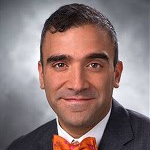Sleep Disorders in Children: Presentation, Early Identification and Treatment
A special issue of Children (ISSN 2227-9067). This special issue belongs to the section "Pediatric Pulmonary and Sleep Medicine".
Deadline for manuscript submissions: 15 May 2024 | Viewed by 12917
Special Issue Editors
Interests: obstructive sleep apnea; clinical sleep disorders; craniofacial development; systemic inflammation and sleep disorders
Special Issues, Collections and Topics in MDPI journals
Interests: pediatric obstructive sleep apnea; clinical sleep disorders; sleep disordered breathing
Special Issues, Collections and Topics in MDPI journals
Interests: pediatric obstructive sleep apnea; clinical sleep disorders; sleep disordered breathing
Special Issue Information
Dear Colleagues,
Sleep disorders are common in children. Sleep deprivation, be it from poor sleep quality or insufficient sleep, can lead to long-term consequences for a child's health and quality of life. It can significantly impact their behavior and cognitive development. Obstructive sleep apnea can affect their growth and can also lead to cardiovascular and metabolic disorders. Early identification of sleep disorders can prevent these negative sequelae.
In the first Special Issue (https://www.mdpi.com/journal/children/special_issues/obstructive_sleep_apnea_syndrome_in_children), we discussed the presentation, pathophysiology, methods of diagnosis, sequelae, and management for children with OSA. In this series, we will continue with more updates in OSA and other sleep-related breathing disorders both in children who are healthy and with underlying medical disorders.
Other non-respiratory sleep disorders such as parasomnias are often observed in young children. They can present as sleep walking, night terrors, confusional arousal and nightmares. Poor sleep quality and insufficient sleep can exacerbate these sleep disorders. Parasomnias can cause sleep disruption and affect daytime behavior.
Insomnia in childhood is also common and can lead to long-term consequences including mental health issues and persistence of chronic insomnia. Difficulty initiating sleep among teenagers from delayed sleep schedules related to circadian rhythm disorder has been increasingly reported, especially in the period following the COVID-19 pandemic. Overall, an increased prevalence of insomnia has been reported following the COVID-19 pandemic. Behavioral insomnia in childhood from learned sleep onset association and behavioral problems leading to difficulty initiating sleep are commonly observed in younger children. Other medical conditions or sleep disorders can cause or worsen insomnia, such as restless leg syndrome, which are also even reported in young children. The urge to move the leg from leg discomfort commonly presents at night when sedentary and can cause difficulty initiating and maintaining sleep.
Excessive daytime sleepiness from primary sleep disorders such as narcolepsy is reported in children and can present even in young children. Hypersomnia can also be a consequence of other sleep disorders and health conditions.
Screening for any sleep problems during a child’s healthy routine maintenance visit is critical, as healthy and restorative sleep should be considered as a fundamental aspect of growth and development. This series of articles will highlight the recent trends and knowledge about sleep disorders in children.
Dr. Manisha Witmans
Dr. Mary Anne Tablizo
Dr. Rakesh Bhattacharjee
Guest Editors
Dr. Darius A. Loghmanee
Guest Editor Assistant
Manuscript Submission Information
Manuscripts should be submitted online at www.mdpi.com by registering and logging in to this website. Once you are registered, click here to go to the submission form. Manuscripts can be submitted until the deadline. All submissions that pass pre-check are peer-reviewed. Accepted papers will be published continuously in the journal (as soon as accepted) and will be listed together on the special issue website. Research articles, review articles as well as short communications are invited. For planned papers, a title and short abstract (about 100 words) can be sent to the Editorial Office for announcement on this website.
Submitted manuscripts should not have been published previously, nor be under consideration for publication elsewhere (except conference proceedings papers). All manuscripts are thoroughly refereed through a single-blind peer-review process. A guide for authors and other relevant information for submission of manuscripts is available on the Instructions for Authors page. Children is an international peer-reviewed open access monthly journal published by MDPI.
Please visit the Instructions for Authors page before submitting a manuscript. The Article Processing Charge (APC) for publication in this open access journal is 2400 CHF (Swiss Francs). Submitted papers should be well formatted and use good English. Authors may use MDPI's English editing service prior to publication or during author revisions.
Keywords
- parasomnia
- insomnia in children
- hypersomnia
- sleep disorders
- obstructive sleep apnea
- sleep-related breathing disorders
- children
- sleep disordered breathing









